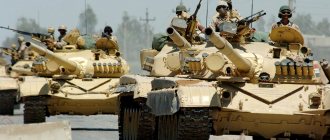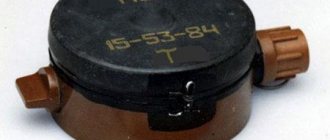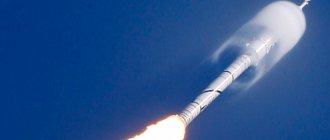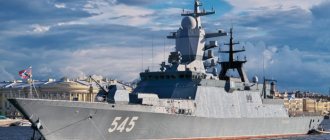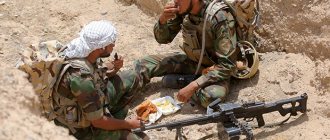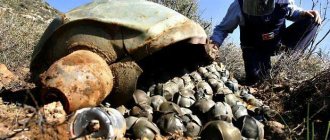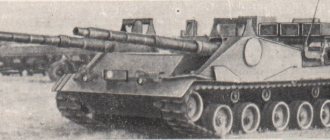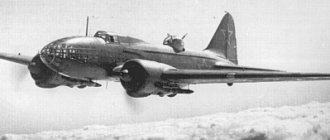Long Lost Province
In the summer of 1990, a three-day armed conflict occurred in the Middle East, which most seriously affected the future of not only the region, but the entire world. At the center of events was Kuwait, a small but extremely oil-rich state on the shores of the Persian Gulf.
Article on the topic
“I often think of Saddam.” Hussein's translator about the war, the USA and Putin
The Ottomans, British, and Germans fought for control of Kuwait. Kuwait, while maintaining formal institutions of local government, for many decades maneuvered between various external forces trying to subjugate it.
The Emirate of Kuwait gained official independence in 1961. And almost immediately he almost lost her. Iraq, Kuwait's neighbor, had its own views on history. Iraqi politicians believed that Kuwait was nothing more than the 19th province of Iraq, previously illegally seized from it.
The annexation of Kuwait to Iraq was prevented by Great Britain, which threatened official Baghdad with armed intervention. The then Iraqi authorities preferred not to bring the matter to war.
Notes[ | ]
- 1990: Iraq invades Kuwait, BBC (2 August 1990). Retrieved April 20, 2010.
- Johns, Dave
1990 The Invasion of Kuwait
(undefined)
.
Frontline/World
. PBS (January 24, 2006). Access date: April 20, 2010. Archived July 8, 2013. - Kuwait Organization and Mission of the Forces (undefined) // Country Studies. - Library of Congress, 1993. - January.
- ↑ 1 2
Iraqi Invasion of Kuwait;
1990 (unspecified)
(inaccessible link). Access date: February 17, 2014. Archived October 6, 2014. - Al Moqatel (“Conducting military operations during the Iraqi invasion of Kuwait”, Al Moqatel)
- ↑ 12
Baath Ground Forces Equipment - Armies of the Gulf War, Gordon L. Rottman, 1993, pp. 31,48,49
- Jane's Armor and Artillery 2003–2004
- Tanks in Operation “Shock and Awe”, Alexey Brusilov, Leonid Karyakin, Tankmaster 2003-08, p.5
- ↑ 1234
Gulf War 1990-1991 ("Desert Storm") Part 1 - Kuwait - Army Equipment
- ↑ 12
The Gulf War: Operation Desert Storm 1990-1991. Anthony Tucker-Jones, Pen and Sword, 2014. P.13 - “Kuwait had loaned a battery of French 155mm Mk F3 SP guns to Iraq during the Iran-Iraq War and a futher 80 fell into Iraqi hands after the invasion.”/Armies of the Gulf War. Gordon L. Rottman, Ronald Volstad. Osprey Publishing. 1993. P.49
- ↑ 12
Kuwait. Navypedia.org - Dotsenko V.D. Fleets in local conflicts of the second half of the 20th century/War in the Persian Gulf. — M.: ACT; St. Petersburg: Terra Fantastica, 2001.
- Modern Conflict in the Greater Middle East: A Country-by-Country Guide. Spencer C. Tucker, ABC-CLIO, 2022. P.179
- The United States and the Security Council: Collective Security Since the Cold War. Brian Frederking, Routledge, 2007. P.81
- Passion for Adventure: Turning Zain into a Telecom Giant. Saad Al Barrak, A&C Black, 2012. P.34
- Um Al'Ma'rik (The Mother of All Battles). Operational and Strategic Insights from an Iraqi Perspective. Volume 1. Iraqi perceptives. Project Phase 2. Institute for defense analyses. Kevin M.Woods. 2008
- Craftsmen of the Army: The Story of the Royal Electrical and Mechanical Engineers Vol II 1969–1992. JMKneen, DJSutton.Pen and Sword. 1997. P.347
- Sahab Ahmed Ali Noor.
Iraqi-Kuwaiti armed conflict 1990-1991. and its international consequences. - Bulletin of Volzhsky University named after. V. N. Tatishcheva, 2011. - P. 2-3. - ↑ 123
Please contact us, please contact us Al Moquatel - ↑ 12
Iraqi Perspectives Project Phase II Um Al-Ma'arik (The Mother of All Battles): Operational and Strategic Insights from an Iraqi Perspective Volume 1 (Revised May 2008). Kevin M. Woods. Institute for defense analyzes - M. Zhirokhov. Second Gulf War: Iraqi invasion of Kuwait, 1990. // Wings of the Motherland. - 2011. - No. 12. - P. 47.
- Invasion of Kuwait
- ↑ 12
Iraqi Invasion of Kuwait; 1990 - Kuwait Skyhawk
- ↑ 12
Damaged and lost allied planes and helos - ↑ 12
SA-342K "Gazelle" - "The Iraqis seized 4 Kuwaiti Mirage jet fighters, 12 Hawk trainers, 5 A-4 Skyhawks, 4 C-130s, 2 DC-9s, 2 Gulfstream 111 and 43 helicopters." The Gulf War: Operation Desert Storm 1990-1991. Anthony Tucker-Jones, Pen and Sword, 2014. P.13
- House of Lords Judgments – Kuwait Airways Corporation v Iraqi Airways Company and Others on 16 May2002, [2002] UKHL 19
- Land Power. The Coalition and Iraqi Armies. Tim Ripley. Osprey Publishing. 1991. P.12
- Iraq:Naval treat to US forces (undefined)
(inaccessible link). Retrieved May 7, 2014. Archived December 25, 2022. - Kuwait Navy
- Iraqi Navy
- Land Power. The Coalition and Iraqi Armies. Tim Ripley. Osprey Publishing. 1991. P.58
- “Two other M60A1s were knocked out by British-produced barmines, captured from Kuwait in 1990.”/M60 vs T-62: Cold War Combatants, 1956-92. David Isby, Lon Nordeem. Osprey Publishing. 2010. P.66
- Clive H. Schofield & Richard N. Schofield (Ed.). The Middle East and North Africa
. New York: Routledge. 1994. p. 147. - Newsweek
Vol. 116. 1990. p. 20. - Daily Report: Soviet Union
. Issues 147-153. 1990. p. 124. - Dale W. Jacobs (Ed.). World Book Focus on Terrorism
. Chicago, IL: World Book, Inc. 2002. p. 17. - Quoted in Lawrence Freedman. A Choice of Enemies: America Confronts the Middle East
. New York: PublicAffairs. 2008. pp. 217-218. See also Rabinovich and Shaked, pp. 403-404. - UNSCR 660
- UNSCR 661 Archived November 1, 2014 on the Wayback Machine
- ↑ 12
Saddam's Three Wars - UNSCR 661
- UNSCR 678 Archived November 2, 2014 on the Wayback Machine
- American Patriotism in a Global Society. Betty Jean Craige. SUNY Press. 1996. P.166
- Saddam apologizes to Kuwait (Date accessed: June 20, 2014)
- Iraq paid reparations to Kuwait for the invasion in 1990-1991, media write
Saddam's "Right War"
Ayatollah Ruhollah al-Musawi al-Khomeini.
Photo: Commons.wikimedia.org In 1979, the Islamic Revolution took place in Iran, bringing to power Ayatollah Khomeini , a fierce opponent of the United States and the Soviet Union.
The United States, extremely dissatisfied with this development of events, which weakened its influence in the Middle East, began to look for force that could be directed against Iran.
Iraq, led by its energetic leader Saddam Hussein, . Iran actively supported Shiite groups operating in Iraq, and Iraq made territorial claims against Iran. On September 22, 1980, the Iraqi army launched its invasion.
The United States supported Iraq by providing Saddam Hussein with intelligence information, loans, and weapons and even materials to create chemical weapons.
The Iran-Iraq war lasted for eight long years, resulted in large material losses for both countries, huge human casualties, and ended in peace on the conditions that existed before it began.
Sentimental dictator. 12 facts about the life of Saddam Hussein
More details
Invasion as a means of paying off debt
The war caused great damage to the Iraqi economy and resulted in a serious decline in the living standards of its citizens. In addition, large loans were taken from other states to wage the war. All this made the position of the Hussein regime quite unstable.
The Iraqi leader was painfully searching for a way out of the crisis. At this time, he remembered his long-standing claims to Kuwait.
During the Iran-Iraq War, Kuwait, openly fearful of the rise of Iran and the expansion of its influence in the region, allocated loans to Iraq totaling $15 billion. However, after the end of the war, relations between the two countries began to deteriorate.
Iraq accused Kuwait of “stealing” oil from border Iraqi fields. This meant Kuwait’s use of directional drilling technologies, which, by the way, were received by the Kuwaitis from the United States.
Saddam Hussein demanded that Kuwait write off the Iraqi debt completely, as well as pay two and a half billion dollars in compensation.
Burning oil wells during the invasion of Kuwait. Frame youtube.com
Consequences[ | ]
The Iraqi occupation of Kuwait lasted 7 months. At the end of February 1991, Kuwait was liberated as a result of a military operation carried out by an international coalition led by the United States. After the Iraqis left and the Al Sabah royal dynasty returned to Kuwait, ethnic cleansing was carried out in the country. During the massacre, 628 Palestinian citizens of Kuwait were killed.[48]
In 2002, Saddam Hussein formally apologized to Kuwait for the invasion and occupation. The Kuwaiti side rejected the apology[49].
As of February 2022, Iraq has paid a total of $47.9 billion to Kuwait in reparations for the military invasion and occupation of the country, as well as the losses and damages caused to individuals, companies, government and international organizations. and still owed about 4.5 billion[50].
“This topic has nothing to do with America”
Kuwait had close ties with the United States, which the Iraqi leader was well aware of.
The main question that historians and political scientists still cannot find an answer to is why Saddam Hussein decided to attack Kuwait?
At various times, quite exotic versions were put forward - they either talked about Saddam’s addiction to hashish, or they claimed that the Kuwaiti ambassador at the negotiations allowed himself the audacity to call Iraqi women prostitutes.
However, serious analysts are inclined to believe that the head of Iraq was convinced that no tough response would come from Washington.
Meeting between April Glaspie and Iraqi President Saddam Hussein on July 25, 1990. Photo: Commons.wikimedia.org
This could be attributed to Saddam Hussein's self-confidence, if not for Washington's rather vague and vague position during the period of aggravation of the situation between Iraq and Kuwait. Despite the fact that the Iraqi leader spoke quite transparently about his intentions, the United States did not stop him.
On July 25, 1990, Saddam Hussein met with US Ambassador April Glaspie . The “Kuwait issue” was also discussed at the negotiations. “I have direct instructions from the president to seek improved relations with Iraq. We do not have a point of view on inter-Arab conflicts, such as your border dispute with Kuwait... This topic is not related to America,” Glaspie said.
These words, according to experts, became a signal for the Iraqi leader to take active action.
Article on the topic
To the delight of al-Qaeda. 6 countries where Americans brought “democracy”
Washington combinators
It can be said that Hussein misinterpreted the ambassador's words. But if Washington wanted to prevent an invasion of Kuwait, why didn't Ms. Glaspie be clearer?
Hussein's ambitions were very convenient for Washington. Strengthening the military presence in the oil-rich region, not far from the borders of Iran, was considered necessary by US military strategists. However, the deployment of large military forces without good reason could provoke resentment among Arab countries, which already did not favor the Americans.
Military intervention to restore justice and suppress the aggression of large Iraq with a powerful army against its small and defenseless neighbor is another matter.
An interesting point: when the Iraqi army is subsequently completely defeated during Operation Desert Storm and the United States, at the head of the coalition forces, will be able to dictate its will to Iraq, for some unknown reason they will not demand Hussein’s departure and will allow it for another 12 years being the leader of the country. It seems that Washington politicians skillfully used Saddam for their own purposes, from the Iran-Iraq war until his death.
Be that as it may, after July 25, 1990, Saddam Hussein was sure that now no one and nothing would interfere with him.
Saddam Hussein. Photo: www.globallookpress.com
Losses[ | ]
Casualties[ | ]
Iraqi casualties: the capture cost Iraq 295 dead and 361 wounded[22].
Kuwaiti casualties: According to Kuwaiti sources, 4,200 Kuwaiti armed forces personnel were killed and 12,000 captured.
Losses of other countries: several soldiers from other countries were killed, several hundred were captured (213 foreign military personnel were captured at the naval base at Cape El-Kulaya alone), about 800 citizens of European countries and the United States were also detained.
Losses of armored vehicles[ | ]
Iraqi losses: 120 armored vehicles were lost[22].
Kuwaiti losses: only the remnants of some units with 18 Chieftain tanks, 20 Vickers tanks, 2 M109s, a BMP-2 battalion and several M113s managed to escape to Saudi Arabia[23].
Aviation losses[ | ]
Iraqi losses
Iraqi aviation losses amounted to 39 planes and helicopters[24]:
- 1 Su-22 (the reason is unknown, the pilot is listed as missing, probably shot down by an air defense system)
- 1 MiG-23BN (presumably a non-combat loss, the pilot was killed, according to another version, an air defense missile system was shot down)
- 1 Super Frelon (presumably shot down by SAM)
- 1 SA.342 Gazelle (shot down by anti-aircraft fire)
- 1 Mi-25
- 1 Bell 412
- 1 Bo.105
- 32 Mi-8 (mostly lost due to non-combat reasons (pilot errors))[25]
Kuwait losses
Kuwaiti military aviation losses amounted to at least 50 aircraft and helicopters:
- 9 Mirage F.1 (2 destroyed on the ground by Iraqi MiG-23BN, the rest captured as trophies)
- 10 A-4 Skyhawk (3 crashed and 7 captured)[26][27]
- 6 Hawk T.Mk.64 (captured as trophies)
- 9 SA.342 Gazelle destroyed and 1 captured[28][29]
- 3 Super Puma (including 1 shot down)
- 1 L-100-30 Hercules (captured as trophy)[26]
- 1 DC-9 (captured as trophy)
American historian A. Tucker points out that the Iraqis captured 43 Kuwaiti helicopters, it is unclear what kind of machines they were, perhaps this was some kind of mistake.[30] What is certain is that the Iraqis temporarily captured one SA-342 helicopter.[29]
The Iraqis captured 10 Kuwaiti airliners as trophies and flew them over to them. Among them:
- 5 Airbus A.310
- 3 Airbus A.300
- 2 Boeing 767[31][28]
The small remnants of Kuwaiti military aviation managed to relocate to Saudi Arabia[10], including 15 Mirage F-1s and 19 A-4s[32].
British plane hijacked and then blown up by Iraqi troops
British losses
- 1 Boeing 747 G-AWND passenger airliner (captured by Iraqis along with crew and passengers)
Fleet losses[ | ]
As a result of the Iraqi operation, Kuwait lost 52 out of 54
available military courts[14]. Among them were 6 missile boats out of 8 missile boats (1 was commissioned by the Iraqi Navy[33])[34]. Many merchant ships were also captured.
Iraqi losses are not known with certainty. Iraqi sources only contain information that during the invasion one Osa missile boat was damaged[23]. The Kuwaitis stated that during the war they destroyed 4 Iraqi boats of unknown types[22].
Other losses[ | ]
In addition, thousands of Kuwaiti missile weapons were captured (including 3,750 TOW ATGMs, air-to-air and surface-to-surface missiles[6], over 100 MM-40 Exocet missiles were captured[35], 1 was destroyed and 3 air defense missile batteries were captured HAWK[4][36]).
British-made anti-tank mines, which were later used against coalition tanks with some success[37], were also trophies for Iraq.
"Revolution" in Kuwait
At the end of July, negotiations between Iraq and Kuwait were organized of Egyptian President Hosni Mubarak On August 1, 1990, they were finally disrupted. Iraq insisted on debt cancellation, compensation and grant assistance. The Emir of Kuwait, Sheikh Jaber al-Ahmed al-Jaber al-Sabah , said that such demands are unacceptable.
At that moment, Iraqi troops were actively advancing to the Kuwaiti border.
Article on the topic
Obsessed with power. Rating of the coolest dictators of recent times
On the morning of August 2, 1990, Iraqi television announced that a revolution had occurred in Kuwait and the “Provisional Government of Free Kuwait,” consisting of 9 officers of the Kuwaiti army, turned to Iraq for help in the fight against the monarchical regime, pursuing an anti-people policy and mired in corruption. In response to a call for help, Saddam Hussein ordered the army to enter Kuwait.
The “Provisional Government of Free Kuwait” did exist, but it did not have any widespread support. The force operation was carried out entirely by Iraqis.
At about 1:30 on August 2, Iraqi special forces landed from helicopters in the area of the residence of the Emir of Kuwait in the Dasman Palace, intending to capture the head of state. However, the emir's guard, which entered the battle, repelled this attack, which allowed the leader of Kuwait to escape by helicopter to Saudi Arabia.
Exemplary destruction of Iraq
Invasion of Kuwait
The second “crime against humanity” of which Hussein is accused was the invasion of Kuwait in 1990 (the first was the Kurdish operation).
It is interesting that during the war with Iran, Kuwait actively supported Iraq and gave it loans. Weapons were supplied to Iraq through Kuwait. Kuwait was a typical artificial state created by Western masters who shaped the map of the Middle East as they saw fit. However, despite its small size, Kuwait has some of the world's largest oil reserves. Therefore, the rulers of Iraq wanted to include Kuwait in their country even before Hussein. So, in 1961, the Iraqi ruler General Abdul Kerim Qassem, who himself came to power in a bloody coup, planned to seize Kuwait. But he didn’t have time, he himself was overthrown and shot in 1963. In 1964, Kuwait and Iraq signed a memorandum according to which Iraq recognized the independence and full sovereignty of the state of Kuwait. In 1971, Baghdad actually intended to make Kuwait a protectorate: by offering to give Iraq a number of strategic facilities free of charge, invest in Iraq, and allow Iraqi workers to move freely around Kuwait. Kuwait refused. Then the Iraqis began to prepare military infrastructure on the border and captured the islands of Warba and Bubiyan, which were of strategic value. Troops were brought in from the islands only after Kuwait paid “tribute.”
When Hussein became the sovereign master of Iraq in 1979, the annexation of Kuwait was one of his main goals. The capture of Kuwait allowed Iraq to become a leading oil power. But the war with Iran got in the way. After the war, Iraq required large investments; the long war dealt a heavy blow to the country's economy. Iraq launched the attack on Kuwait against the backdrop of a severe economic crisis resulting from the huge debts that Baghdad was forced to get into during the war with Iran. In addition, the post-war reconstruction of the Iraqi economy was complicated by a sharp drop in oil prices - from 19 to 11 dollars per barrel, and in 1990 - to 7 dollars. And the drop in prices for “black gold” was largely caused by Kuwait’s economic policy. Saudi Arabia and the United Arab Emirates, which sold oil in excess of the quota set by the Organization of Petroleum Exporting Countries (OPEC). “I could not remain silent when Kuwait, by agreement with Saudi Arabia and under pressure from the United States, decided to sharply lower the world price of oil,” Hussein later told Yevgeny Primakov, justifying his invasion.
This pricing policy did not suit Baghdad, which needed funds to rebuild the country after the war. Already in mid-July 1990, Saddam Hussein accused Kuwait and the United Arab Emirates of overproduction of oil. In response to Saddam's request to maintain oil production quotas and provide loans to Iraq, Kuwait responded that after the disappearance of the Iranian threat, it saw no point in this. In addition, Baghdad said that Kuwait is illegally extracting oil from the disputed Rumaila oil production area on the Iraq-Kuwait border. Against the backdrop of these statements, the Iraqi army occupied part of the Kuwaiti territory adjacent to the disputed area, and Iraqi specialists began to actively extract oil.
At the end of July 1990, the parties agreed to begin peace negotiations, which began on August 1, but lasted only two hours. As a result, Baghdad responded to the “economic aggression” with its own military action. On August 2, 1990, Iraqi troops crossed the border into Kuwait and captured the capital, Kuwait City. Resistance from the relatively small and weak armed forces of the oil-rich state was minimal. Iraq presented the invasion of Kuwait as “providing assistance to a people rebelling against the regime.” By August 7, a republic was formed on the territory of Kuwait, which existed for 30 hours - its leaders turned to Saddam Hussein with a request to include Kuwait in Iraq.
On August 6, the UN Security Council imposed economic sanctions against Iraq and adopted a series of resolutions condemning the actions of Baghdad. All countries had to ban imports from Iraq, the import of weapons, military materials, and close channels of economic and financial assistance. Subsequently, an air embargo was introduced against Iraq, which implied a complete ban on the transport of any cargo to Iraq, other than food and humanitarian aid. Initially, this did not worry Baghdad much. Saddam accepted Kuwait's "pleas" for a "return to the fold of a great Iraq" and made the country the 19th province of Iraq. Saddam's cousin Ali Hasan al-Majid (known as "Chemical Ali") was left in charge of the new province.
In November 1990, the UN Security Council approved the military operation. An international coalition was formed. Hundreds of thousands of soldiers and thousands of pieces of equipment were transferred to the region. The Pentagon proposed a plan for a military operation, led by American General Norman Schwarzkopf. In November 1990, diplomatic efforts to resolve the crisis finally failed. The UN set a deadline for Iraq to withdraw from Kuwait and gave the green light to take “any necessary measures” that would help meet the demands of the international community.
"Desert Storm"
Hussein was let down by two main factors. Firstly, after the war with Iran, he was confident that he was in favor with the United States and Kuwait, which historically was part of Iraq, would simply be “written off.” That it is more profitable for the West to keep Iraq as an ally. This was understandable. Indeed, during Iraq’s aggression against Iran, the world community not only turned a blind eye to the fact that Baghdad was the first to start a war of conquest, but also almost entirely helped the Hussein regime. Therefore, the harsh reaction of the United States paralyzed the will of Baghdad. As a result, the idea of a “small victorious war” led Iraq to disaster.
“At first, Saddam directly said that the harsh American reaction was nothing more than a bluff, since the United States would not want to use its armed forces in full against Iraq in the current situation. Then, when the bombing had already begun, Saddam believed that this would be the end of the matter, since the United States “would not undertake a ground operation,” recalled diplomat and Middle East specialist Yevgeny Primakov.
Secondly, the Soviet Union was in the process of collapse and could no longer stop the aggression of the West and the United States (with the participation of Arab allies). It is obvious that if the USSR had remained a superpower in the 1990s, the United States would not have been able to organize an exemplary defeat of Iraq. Washington decided to use the moment of the United States’ transition to the position of the only superpower on the planet (“the world’s gendarme”) to show all of humanity what awaits rebellious or undesirable regimes. Thus, “our son of a bitch” Hussein, who exterminated Iranians in the interests of the West, quickly became an “enemy of humanity” and a “bloody dictator.”
As they say in the USA, nothing personal, just business (big politics).
On January 17, 1991, the forces of the United States, Great Britain and other countries began a massive missile and bomb operation. “The mother of all wars has begun!” said Hussein. For the first time, cruise missiles were used en masse in real combat conditions. They were launched by American ships stationed in the Persian Gulf. The crews of fighters, bombers, and combat helicopters from the United States, Great Britain, and Saudi Arabia were tasked with destroying hundreds of targets. It was an exemplary, exemplary, punitive operation that was supposed to show humanity the military-technological superiority of the American “world gendarme.”
Iraq tried to resist. On January 17, Iraq launched its first strike on Tel Aviv and Haifa with El-Hussein (R-17 Scud) ballistic missiles. Another missile was fired at US troops in Saudi Arabia. It was intercepted using the Patriot system. This was the first anti-missile interception. On February 25, a Scud hit a building at the American base in the city of Dharam in Saudi Arabia. 28 US Army personnel were killed and 110 were wounded. During the Gulf War, the Iraqis fired modified P-17s at Israel (43 launches, 40 successful), Saudi Arabia (48 launches, 44 successful), Qatar (1 launch), and Bahrain (1 launch). A total of 93 missiles were launched, 5 missiles went off-trajectory during the start of the launch and 2 during the flight. In general, the P-17s performed well: significant destruction in Israel and Saudi Arabia. According to the Israeli side, the economic damage from the destruction amounted to $250 million. Moreover, not a single missile fired was equipped with weapons of mass destruction. It is also worth noting that the number of Scud mobile missile launchers involved was only 14 units, another 78 installations were dummies or decommissioned Luna rockets. Coalition pilots stated that during the war they destroyed about 100 Scuds, but in reality not a single installation was hit, not even a single dummy was damaged. Coalition aircraft managed to bomb only a few empty missile silos.
The Israelis began hastily deploying American Patriot installations on their territory. But their effectiveness was small. According to the Israeli Ministry of Defense, the Patriots, despite the overexpenditure of anti-missile missiles (including a case with the consumption of 28 units per target, managed to intercept no more than 20% of the missiles launched by the Iraqis. In other sources, the data varies greatly: from 9% according to estimates of the Control Chamber US administration up to 36% in Russian sources. In a number of American sources, the figures are clearly greatly exaggerated - 50-80%. It was noted that even close explosions of Patriot anti-missile missiles did not destroy the R-17 warheads, but only diverted them from their course. In general, use The R-17 missiles became one of the main successes of the Iraqi army in the Gulf War, but Baghdad did not dare to do more.
It is worth noting that this war became a powerful advertisement for American weapons, which allegedly easily “beat” Soviet missiles, air defense systems, aircraft, tanks, etc., which were in service with the Iraqi army. However, in many ways this was window dressing (as with the “destroyed” Scud missiles). The will of Baghdad, stunned by this response from the West, led by the United States, was largely paralyzed. Iraq did not use significant resistance potential for fear of fueling the fires of war. In addition, as previously noted (the war with Iran), the training of the Iraqi command and rank and file was low. The Iraqis could not use the combat potential of Soviet weapons to the fullest. If the Russians had fought with the same equipment, the Americans and their allies would have washed themselves in blood. As a result, Desert Storm became an exemplary beating of Iraq, when the morally broken victim barely resisted.
Meanwhile, allied aircraft increased the number of combat missions, which increased the number of casualties among Iraqi civilians. The US called this "collateral damage." On February 24, 1991, the Allies launched a combined land, air and sea offensive. The Iraqi army's resistance was broken in just 100 hours. By February 26, Iraq announced that it was withdrawing its forces from Kuwait. However, he still refused to accept the terms of all UN resolutions related to this issue. On February 27, 1991, enthusiastic Kuwaitis greeted the Allied troops entering their capital.
On March 2, the UN Security Council adopted a resolution confirming the terms of peace. According to the document, Iraq was required to cease all hostilities, revoke its annexation of Kuwait, disclose all chemical and biological weapons in its possession, release all foreign prisoners, and accept responsibility for casualties and property damage resulting from the occupation of Kuwait. The next day, during a meeting with American military personnel in a tent at the captured Iraqi military base of Sawfan, the Iraqi command officially accepted the terms of peace. Saddam Hussein was not present.
1991 uprisings Sanctions
Almost immediately after the surrender of Baghdad, uprisings began. The Shia population of Basra, Najaf and Karbala in the south of the country staged massive street demonstrations against the regime of Saddam Hussein. The Kurds rebelled in the north. The first major city to come under their control was Suleymaneh. Within a week, the Kurds controlled the Kurdish Autonomous Region and the nearby oil city of Kirkuk. However, the rebels' hopes for American support were not justified. The Iraqi army brutally suppressed the uprising. As a result, according to the United States, from 30 to 60 thousand people died.
Iraq was given the condition that tough economic sanctions against it would remain until the complete elimination of all weapons of mass destruction (WMD), including chemical and biological, as well as the complete elimination of the atomic program. A UN Special Commission (Unscom) headed by Lord Butler arrived in the country to find out whether Iraq possessed WMD.
In 1991, the UN first allowed Iraq to sell small amounts of oil in exchange for humanitarian supplies. However, Saddam Hussein did not accept this offer until 1995, when the scope of the agreement was expanded to $2 billion. The program was aimed at enabling ordinary Iraqis to receive at least a basic food ration, but in fact the first supply did not arrive in the country until March 1997. As a result, the ordinary population suffered greatly, and the former prosperity of the “energy power” had to be forgotten.
In 1998, the program's coordinator, Denis Halliday, resigned from his post, saying that the sanctions had failed as a concept and only targeted innocent people. His successor, Hans von Sponeck, left in 2000, saying the sanctions regime had led to "a real human tragedy." In 1999, infant mortality rates in Iraq were twice as high as before 1991, according to Unicef. In fact, Western countries, allegedly punishing the “bloody dictator,” committed economic genocide of the country’s population by creating the “Iraqi zone.”
In 1999, the export quota for Iraqi oil was completely lifted, but strict restrictions were maintained on the import of “dual-use” goods and products into the country, that is, products that could, in principle, be used to produce prohibited types of weapons.
"Fox in the Desert"
In December 1998, the United States and Britain waged a three-day military campaign in Iraq. It was preceded by a crisis in relations between UN military inspectors (Unscom) and the Iraqi authorities. Baghdad obstructed the inspectors, denied them access to the so-called presidential palaces and refused to cooperate. In addition, Baghdad constantly accused the inspectors of spying for the US and Israel. In principle this was true. The UN subsequently admitted that the inspectors passed information to American and other Western intelligence agencies. In mid-December, Unscom chief Richard Butler announced that Iraq continued to interfere with the inspectors' activities. In the hours that followed, UN staff were evacuated from Baghdad and military operations began.
About 100 targets in Iraq were subjected to rocket and bomb fire. The purpose of the operation, as announced, was to "reduce the capabilities" of Saddam Hussein's regime to create weapons of mass destruction. In addition to facilities Western military officials say are linked to the production of chemical and biological weapons, the targets included the headquarters of the Iraqi secret police and the elite Republican Guard, as well as defense facilities and an oil refinery in Basra. Deputy Prime Minister of the Iraqi government Tariq Aziz said that 62 soldiers were killed and 180 were injured. At the same time, an opinion arose in the West that American President Bill Clinton launched an attack on Iraq in order to divert the attention of the public and the press from the growing sex scandal regarding his relationship with White House intern Monica Lewinsky.
Iraq, if not for the military aggression of Western countries led by the United States, could have existed even under sanctions. Before Desert Storm, Baghdad was able to build good infrastructure, including excellent roads, energy, and irrigation canals. There was plenty of fuel for transport and equipment. The problem was getting spare parts and components. This problem was partially solved by smuggling. The border with Jordan was porous and goods flowed through it. Even under sanctions, Baghdad managed to carry out some social programs, provide the population with food and medical care, while maintaining a completely acceptable standard of living. During the entire reign of Saddam, one could safely appear on city streets at any time. Ethnic and religious minorities were not persecuted. Radical jihadists were immediately shot. This guaranteed, although not a rich, but stable life. The Hussein regime still had a margin of safety. However, Iraq was finished off.
War of 2003. Execution
A few days after Operation Desert Fox ended, Baghdad said it would not allow Unscom inspectors to return. The question arose about changing the team of UN weapons inspectors, as members of Unscom were involved in a scandal involving the transfer of information to American and other Western intelligence agencies. In June 1999, the head of Unscom, Richard Butler, resigned from his post: his contract had expired. Six months later, the Unmovic organization was created, which took over the functions of Unscom, but Baghdad also denied its representatives the right to enter. Due to the absence of military inspectors on Iraqi territory, Iraq was again accused of working on the creation of weapons of mass destruction.
In November 2000, George W. Bush became US President, making it clear from the very beginning that he intended to pursue a tough policy towards Iraq and promising to “breathe new life” into the sanctions regime. He continued the funding of Iraqi opposition groups, in particular the exiled Iraqi National Congress, begun by the Clinton cabinet, hoping to thus undermine the power of Saddam Hussein from within. After the terrorist attack of September 11, 2001, American authorities began to claim possible involvement in the attacks by Saddam Hussein's regime, although this opinion remained unconfirmed, it played a significant role in future US aggression. In early 2002, the US administration publicly announced that the goal of its Iraq policy was “regime change.”
During this period, the US masters were already preparing to unleash the Fourth World War in order to solve a number of problems associated with the systemic crisis of America, the entire Western civilization and the capitalist system. The operation of September 11, 2001 became the reason for a large-scale invasion of the Near and Middle East (Afghanistan and Iraq) in order to prepare the region for a major war. Therefore, Iraq became an ideal target
- one of the cradles of human civilization, geographical location, huge reserves of “black gold” that the West brought under its control, a fairly large population that was put on the brink of survival.
This allowed the Western masters to destabilize a huge region, unleash a wave of unrest and create the “Caliphate” - the “battering ram” that created the Middle East front of the Fourth World War.
In March 2003, the United States launched a military operation against Iraq. The Iraqi army, once one of the best and most powerful in the region, had already disintegrated and was unable to provide worthy resistance, although in some places the Iraqis fought well. Everything was decided by the betrayal of the generals, who opened the front and allowed the interventionists to take Baghdad without any problems, the assault of which could have caused a lot of problems for the Americans. In the last weeks of his rule, Saddam Hussein felt the betrayal of the generals and clearly realized the complete inability of his armed forces to organize resistance. The President of Iraq then directly addressed the people, calling out: “Arm yourself!” Saddam opened the arsenals and distributed all government stockpiles of weapons to the population, including grenade launchers, explosives and mines. Thus, by leaving, he created a good foundation for the future guerrilla war.
Hussein was forced to hide, but on December 14 in his native Tikrit he was detained and arrested. On November 5, 2006, the Iraqi High Criminal Tribunal found Saddam guilty of killing 148 Shiites and sentenced him to death by hanging. On December 30, 2006, Saddam was executed.
Saddam's execution has sparked controversy. Shiites and Kurds in Iraq approved of the justice. “This is the least that Saddam deserves,” said Shiite leader and Prime Minister of Iraq Nuri Maliki, commenting on the verdict. US President George W. Bush welcomed Saddam's execution as a manifestation of justice and the will of the Iraqi people to build their lives within the framework of the rule of law: “Saddam Hussein was executed today, after a fair trial - the kind he denied to the victims of his brutal regime. During the years of Saddam Hussein's tyranny, such fair trials could not even be dreamed of. It is proof of the Iraqi people's determination to move forward after decades of oppression that Saddam Hussein, despite his heinous crimes against his own people, was given this opportunity." But Bushey later expressed disappointment in the way Iraqi authorities carried out the execution. The execution of the Iraqi leader was supported in Israel, Iran, Kuwait, and Great Britain, that is, in countries that were interfered with by Hussein's regime.
Many political and religious leaders noted the demonstrative barbarity of Saddam's execution and saw the West as an attempt to cover up the traces of its crimes. Russian President Vladimir Putin said about the hanging of Saddam Hussein: “Terrible. Barbaric execution." The Russian Foreign Ministry quite accurately predicted the future of Iraq: “A hasty, brutal execution will further deepen the split in Iraqi society. Instead of the national reconciliation and accord they so desperately need, the people of Iraq risk receiving another round of fratricidal conflict and numerous new victims.”
Chairman of the Council of Muftis of Russia Ravil Gainutdin said: “The execution of such an inhumane sentence will throw away all the aspirations of the Iraqi people for the transformation of the country.” The Vatican called on the Iraqi court not to impose the death sentence on Saddam and condemned the sentence, prophetically noting that the brutal execution “would worsen the climate of hatred and sow new violence.”
Yevgeny Primakov, a well-known Arabist who was personally acquainted with Saddam, expressed the opinion in one of his interviews that the hasty execution was an attempt by the CIA to “cover the tracks” of its policies in the Persian Gulf. Libyan leader Muammar Gaddafi took a similar position: “Saddam Hussein was overthrown not by the Iraqi people, but by foreign aggressors.” Three days of mourning were declared in Libya.
Three-day blitzkrieg
At 2 a.m., a full-scale invasion of 120,000 Iraqi troops began. Aircraft bombed Kuwait, and marines landed on the coast.
By 5 o'clock in the morning the main forces of the Iraqi army approached the Dasman Palace. The battle for him lasted until the evening and ended in the defeat of the Kuwaiti forces. , the brother of the Emir of Kuwait, Fahad al-Ahmed al-Jaber, was killed .
Resistance by various units of the Kuwaiti Army continued until August 4. The 35th Tank Brigade of the Kuwaiti Army in the area of the western suburb of Kuwait Al-Jahra held back the advance of a large enemy tank group for more than two days.
War in Kuwait, 1990. Frame youtube.com
Despite this, by the evening of August 4, the Kuwaiti army was completely defeated, and the territory of the country came under the control of Iraqi forces.
During the military operation, the Iraqis lost 295 people killed and about 360 wounded. The losses of the Kuwaiti army were much greater: 4,200 people were killed, and about 12 thousand were captured. Kuwaiti soldiers who escaped death and capture took refuge in Saudi Arabia.
Strengths of the parties[ | ]
Kuwait
: 27,200 military personnel (another 20,300 people in reserve)[11]. Also on the territory of Kuwait were an unknown number of mercenaries from Saudi Arabia and other third countries (from several hundred to several thousand), US contract soldiers and about 220 British military specialists.
Kuwait's ground forces consisted of 16,000 regular army soldiers and 7,200 National Guard soldiers, and were armed with:
- 281 tanks: 165 Chieftains, 70 Vickers, 40 Centurions and 6 M-84s.[12]
- 1034 infantry fighting vehicles and armored personnel carriers: 100 Saladin reconnaissance armored vehicles, 90 Ferret, 245 BMP-2, 231 M113 armored personnel carriers, 56 missile M901 ITV, 130 Saracen, 100 TH-390, 62 V-300 and 20 V-150 .
- 112 units of heavy artillery: 36 M109A2 self-propelled guns, 20 (or 80 [13]) MK F3, 40 heavy 120 mm RT-F1 mortars and 16 M-101 towed guns. There were also several dozen light 81-mm mortars.
- 3750 TOW ATGMs (56 PU), 200 Vigilant ATGMs, 120 Fagot ATGMs and 20 HOT ATGMs.
- 12 OTRK "Luna-M".
Kuwaiti Army units: 15th Tank Brigade (Kuwait City), 35th Tank Brigade (Mutla Pass), 6th Mechanized Brigade (Mutla Pass), Emir Guard (Kuwait City), 25th Commando Brigade (Mutla Pass) and a brigade of border troops (strong points on the border).
The Kuwaiti Air Force consisted of 1,800 military personnel and was armed with:
- 79 combat and training aircraft: 20 Mirage F1CK, 4 Mirage F1BK, 24 A-4KU, 3 TA-4KU, 12 Lighthing, 4 Hawker Hunter and 12 Hawk Mk.64.
- 8 transport aircraft: 4 L-100-30, 2 DHC-4 and 2 DC-9.
- 33 helicopters: 17 Sa.342, 10 Sa.330 and 6 AS-332B.
The Kuwaiti Navy consisted of 2,200 military personnel and had 54 warships of various classes, including 8 missile boats of the 6th class TNC-45 and 2nd class TPB-57[14][15].
Iraq
: 88,000 regular army and Republican Guard soldiers. 690 tanks, 556 self-propelled and towed guns, an air group and two naval groups.
Fatal Delusion
A few days later, the "Provisional Government of Free Kuwait" turned to Iraq with a request to join. On August 28, Kuwait was officially declared the 19th province of Iraq.
Clouds were already gathering over Iraq. The UN Security Council demanded the immediate withdrawal of Iraqi troops from Kuwait. Economic sanctions were introduced against Hussein's regime. Washington put together an international coalition and brought its elite military units to the region to punish the aggressor.
Saddam Hussein, extremely pleased with the blitzkrieg carried out, continued to remain convinced that all this vanity was just appearance and window dressing. After all, Ms. Glaspie clearly said that “this topic has nothing to do with America.” Can the United States lie?
